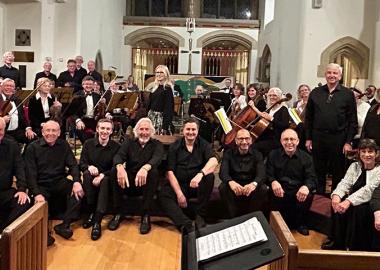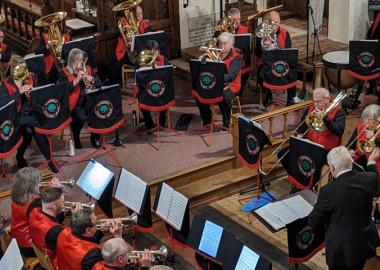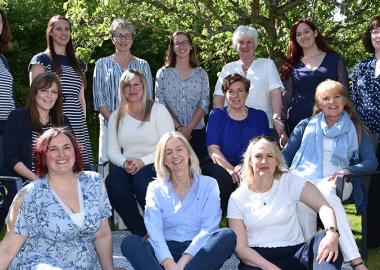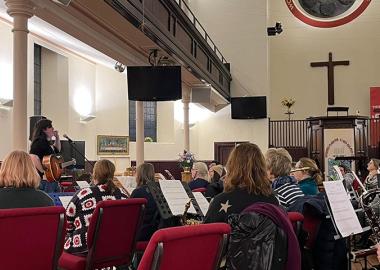Edmund Hunt on final amendments and writing spacial awareness into a score.
Since my previous blog post, The Singers and I have passed several milestones on our Adopt a Composer journey. The final movement of my piece, which I completed over the summer, has been rehearsed, meaning that the piece is now complete (with the exception of a few small adjustments to the score). After some discussion with the choir’s director, Donald, and with choir members, the piece now has a title. We settled for ‘Vita Hominum’, taking words from the text of the first movement. Broadly speaking, the texts (drawn mainly from writings by the Venerable Bede) describe an ongoing journey from uncertainty and fear, through the storms and troubles of life, to a place of tranquility.
Now that all four movements of ‘Vita Hominum’ are written down it’s possible to have a much clearer sense of the overall shape and structure of the piece. Sections of material that I had composed mentally several months ago (without committing my ideas to paper) now have their place within the score.
Surprisingly, one of the most difficult aspects of this part of the composition process has been to find a straightforward way to explain the physical staging of the piece.
At various times in each movement, different groups of singers are directed to move between areas of the performance space. All of this movement happens while the performers are singing, so that the piece can be performed without much of a break between sections. In my experience, the attempt to write performance instructions that are both detailed and scrupulously unambiguous can sometimes lead to wordy descriptions that appear more complicated than the simple actions they describe. However, as with every stage of the composition process, feedback during rehearsals has shown me which information is helpful to the performers and which is unnecessary.
The opportunity to rehearse work in progress, to test and adapt material, and to discuss the performers’ thoughts and ideas has been one of the great benefits of the Adopt a Composer experience.
The process of rehearsal, feedback and editing has also allowed me to challenge myself in unexpected ways. Discussions with choir members have drawn my attention to the ways in which I might build on the choir’s strengths to develop musical ideas that are new to me and to them. My decision to use spatialisation came out of just such a conversation. Similarly, my decision (in movement 2) to divide the choir into three groups, each with its own conductor, came from the fact that a number of choir members have had experience of conducting and leading their own ensembles. It could have been tempting to write a piece that was based solely on the sort of materials and ideas that underpin the choir’s favourite repertoire. However, the interactive process of Adopt a Composer has allowed me to build on the choir’s musical identity to create something that is potentially more meaningful and satisfying both for me and for The Singers.
As a result, ‘Vita Hominum’ feels like a natural offshoot of the choir, borne out of an incredibly rewarding and stimulating musical collaboration.
The next milestone of our Adopt a Composer project will be the first run through of all four movements in order. This will take place at the November rehearsals. I am excited to hear the whole piece and to get a sense of the spatial dimension of the work. In the meantime, I must make a few final tweaks to the score, proof read very carefully, and collate all four movements into a single document. Although our Adopt a Composer journey is nearing its end, it feels as though the life of the composition is just beginning. In addition to the premiere on 15 December (which will be recorded by BBC Radio 3), the choir already have plans to sing some or all of ‘Vita Hominum’ at future events including a concert at St. Giles’ Cathedral, Edinburgh on 14 July 2019. It is satisfying to know that my role as the composer of ‘Vita Hominum’ is almost over. After months of drafts, rehearsals and adjustments, the piece is about to develop a life of its own, to be taken out into the world by the people who have enabled it to come into existence.










